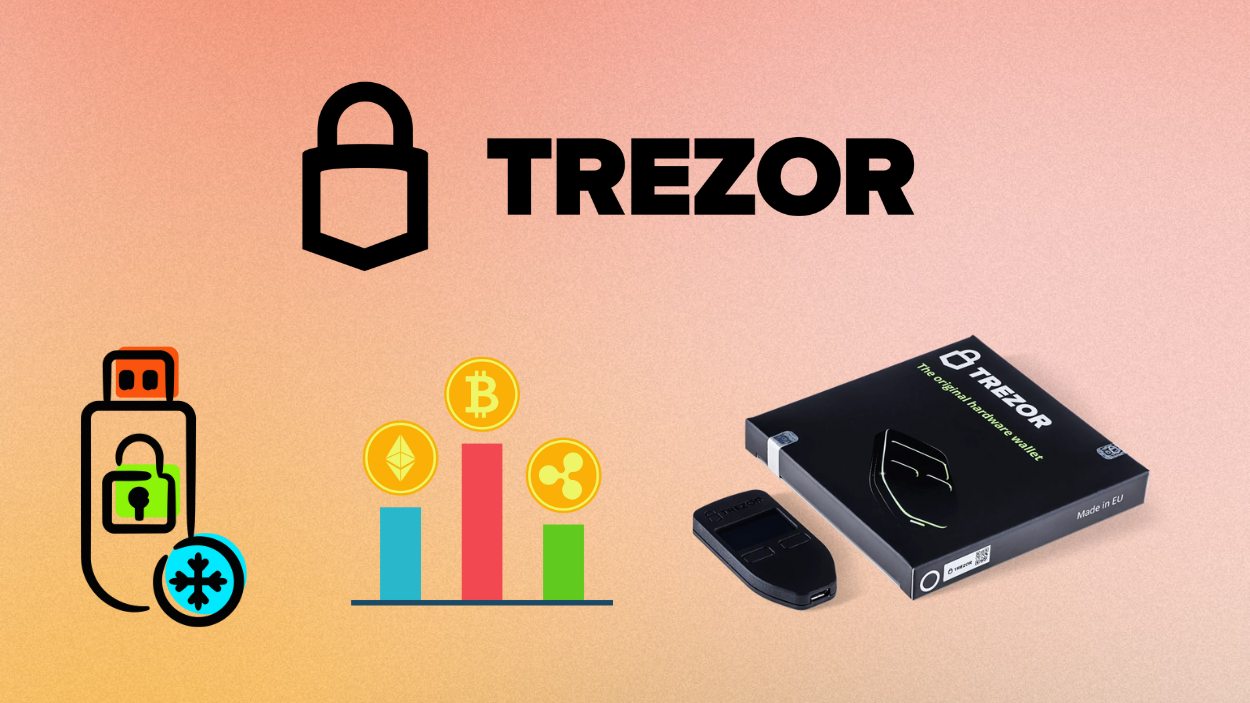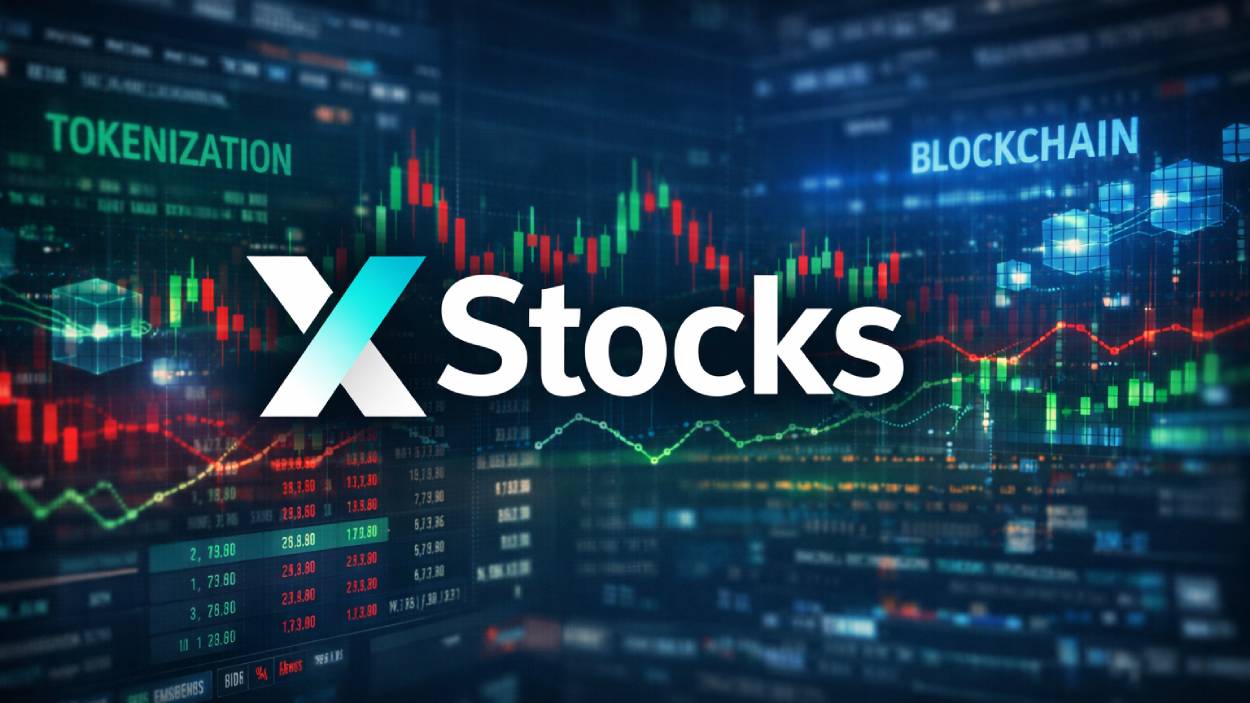The asset management industry has experienced tremendous growth over the past few decades, transforming how wealth is managed globally. In 2025, the industry is navigating through a period marked by significant innovations, increasing market complexities, and a growing emphasis on sustainability. Whether you’re an institutional investor, a private client, or a financial advisor, understanding the latest trends and developments in the asset management space is crucial. As we explore the landscape of 2025, we’ll dive deep into market sizes, key trends, and emerging forces shaping the future of asset management.
Editor’s Choice: Key Industry Trends and Milestones
- Global assets under management (AUM) reached an estimated $162 trillion in 2025, reflecting an annual growth rate of 5.9%, driven by market rebounds, institutional inflows, and rising investor participation in emerging markets.
- The United States remains the global leader in asset management, holding 54.2% of total AUM, followed by Europe at 29.7%, and Asia-Pacific gaining momentum at 13.1% as regional wealth continues to expand.
- Sustainable investment funds grew by 25.4% in 2025, as ESG-driven portfolios now account for over $4.7 trillion globally, driven by regulatory support, investor pressure, and climate-aligned mandates.
- The rise of passive investing continues, with ETFs making up 37.8% of the total managed asset market in 2025, fueled by low-cost structures, automated rebalancing, and strong adoption in retirement accounts and institutional portfolios.
- Artificial Intelligence (AI) and machine learning tools are now used by 44% of asset managers in 2025 for risk modeling, client segmentation, alpha generation, and real-time portfolio optimization.
- Private equity and alternative assets grew by 11.6% year-over-year in 2025, as institutional investors continue to shift toward non-public assets in search of higher yield and diversification amid rising global interest rate uncertainty.
- Digital transformation remains a top priority, with 82% of asset management firms adopting cloud infrastructure in 2025 to improve operational scalability, data analytics, and cybersecurity resilience.
Media Asset Management Market Share by Industry
- The Media and Entertainment sector holds the largest share of the global media asset management market at 28.6%.
- The Corporate industry accounts for a significant portion, contributing 24% to the market.
- Educational institutions make up 20% of the market, emphasizing the growing role of digital content in learning.
- The Government sector represents 15% of the market, highlighting its investment in secure media storage and access.
- Healthcare contributes 12.4%, reflecting the increasing use of digital media for patient records, diagnostics, and training.
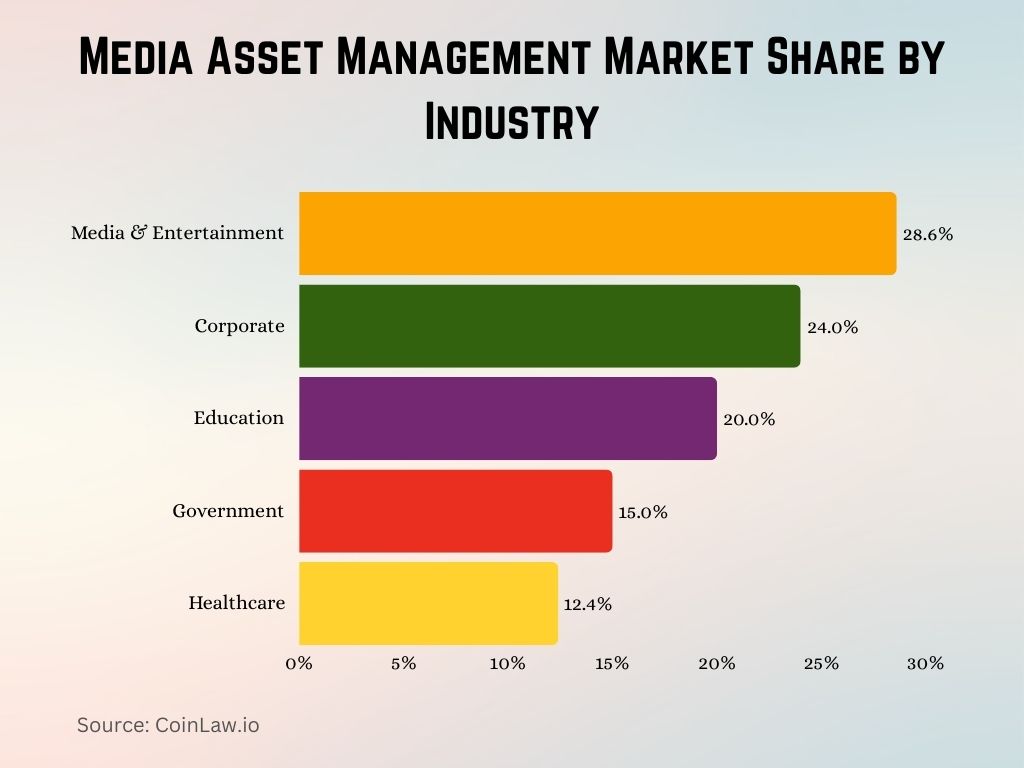
Market Concentration and Characteristics
- The top 10 global asset management firms now control over $66.2 trillion in AUM, accounting for approximately 40.3% of the global market in 2025, reflecting further consolidation and strong institutional mandates.
- BlackRock remains the world’s largest asset manager, overseeing more than $9.9 trillion in assets as of 2025, followed closely by Vanguard, which manages approximately $8.5 trillion, as both firms continue to dominate the passive investing space.
- Boutique asset managers specializing in alternatives, ESG, and thematic strategies are seeing robust demand, with those segments achieving compound annual growth exceeding 11.5% over the past three years, especially in impact and private market investments.
- Mergers and acquisitions (M&A) in the asset management sector totaled over $5.7 billion in deal value in 2025, as firms pursued tech integrations, ESG product lines, and AI-driven analytics platforms to remain competitive.
- Fee compression remains a pressing challenge for traditional managers, with average management fees declining further to 0.41% in 2025, due to passive fund dominance and robo-advisor pricing pressure.
- Active management continues to face headwinds, with only 34% of actively managed equity funds outperforming their benchmarks in 2025, reinforcing the investor shift toward rules-based and hybrid models.
- The shift toward personalized portfolios is accelerating, with AI-driven customization tools reshaping client offerings. By 2025, over 20% of retail investors globally will be using algorithm-based, values-aligned portfolio construction platforms that consider sustainability, ethics, and lifestyle goals.
Company Distribution by Funding Stage
- Growth Funding dominates the list with 1,694 companies, the most common funding stage.
- Mergers & Acquisitions (M&A) account for the second-highest with 1,045 companies.
- Early Stage VC / Series A includes 770 companies, showing active early investment.
- Seed funding supports 644 companies, highlighting startup activity.
- Venture Round involves 501 companies, continuing funding beyond early stages.
- Self-funded businesses represent 460 companies, showcasing bootstrapped growth.
- Later Stage VC / Series C includes 347 companies, the smallest segment on the chart.
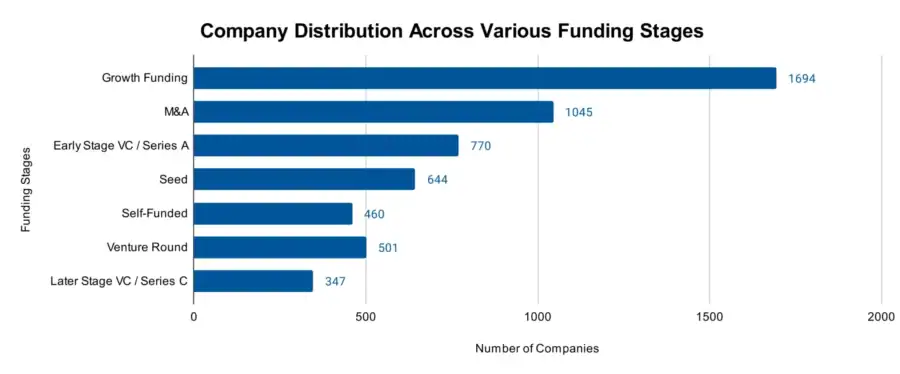
Outlook for Alternative Asset Managers
- Private equity continues to grow robustly, with AUM expected to reach $9.7 trillion by the end of 2025, reflecting a 12.3% annual growth rate, as institutional investors seek long-term alpha and portfolio diversification amid public market volatility.
- Venture capital funds saw a 10.8% increase in 2025, reaching approximately $1.33 trillion in AUM, with technology, fintech, and biotech sectors continuing to attract global capital amid innovation in AI, genomics, and climate tech.
- The hedge fund industry holds steady with $4.6 trillion in assets under management in 2025. While passive strategies continue to exert fee pressure, performance-based models are being restructured to include tiered incentives and longer lock-up periods to improve retention.
- Real assets, including infrastructure and natural resources, are projected to grow at a CAGR of 8.2% through 2027, as investors look for inflation-hedged, yield-generating exposures in renewable energy, logistics, and resource security.
- Real estate investment managers now oversee approximately $13.9 trillion in AUM in 2025, with rising demand for green-certified buildings, affordable housing, and mixed-use urban developments, particularly in climate-resilient regions.
- Private debt has surged to $1.9 trillion under management in 2025, driven by institutional appetite for higher-yield, non-bank lending, especially in mezzanine finance, distressed credit, and direct lending.
- Impact investing has expanded significantly, with AUM reaching $2.2 trillion in 2025, as ESG-driven mandates and values-based investing gain traction across pension funds, endowments, and family offices seeking both returns and social/environmental outcomes.
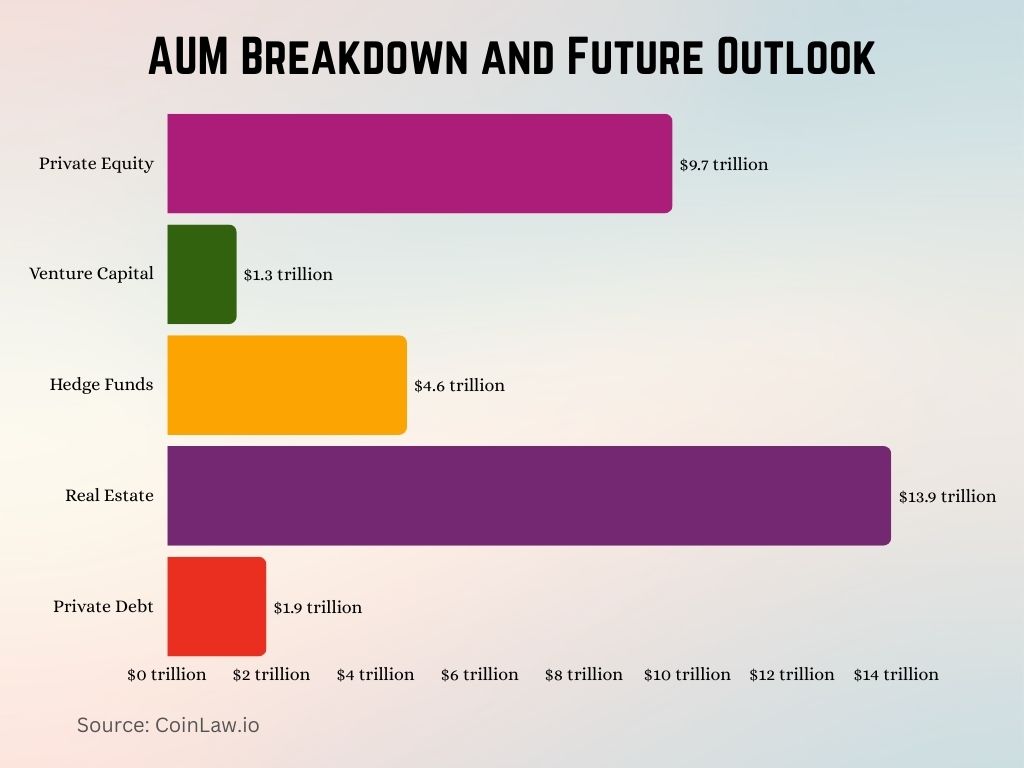
Asset Management Market Size and Trends
- The global asset management market is projected to reach $164.5 trillion by the end of 2025, maintaining a CAGR of 6.3% since 2020, fueled by institutional inflows, passive investing, and alternative assets.
- North America continues to lead the market with over $52.8 trillion in AUM, while Asia-Pacific remains the fastest-growing region, posting an annual growth rate of 8.4% in 2025, driven by wealth creation in China, India, and Southeast Asia.
- In 2025, institutional clients such as pension funds, insurance companies, and sovereign wealth funds account for 66.2% of total AUM, while retail clients represent 33.8%, reflecting sustained dominance of large institutional allocators.
- The alternative investment market reached $14.6 trillion globally in 2025, supported by rising allocations to private equity, infrastructure, real assets, and hedge funds as investors seek diversification and higher yield.
- Sustainability-linked investment products now represent approximately 17.8% of the total asset management market, with projections indicating they will surpass 21% by 2026, boosted by ESG mandates, regulatory support, and investor activism.
- Robo-advisory platforms continue rapid expansion, managing an estimated $4.65 trillion in assets globally in 2025, marking a 16.3% increase year-over-year, as digital wealth solutions become mainstream across both developed and emerging markets.
- In the European Union, green finance continues to gain traction. More than $10.9 trillion of AUM is now directed into climate-aligned strategies, well on track to exceed $12 trillion by 2026, driven by SFDR regulations and Net Zero commitments.
Top Asset Classes Expected to Deliver High Returns by 2028
According to the 2025 Outlook Survey, investors expect the highest returns over the next 3 years from”
- Private Debt/Credit: cited by 36% of respondents.
- Private Equity: chosen by 31% of respondents.
These top asset classes are seen as the most promising for meaningful returns through 2028.
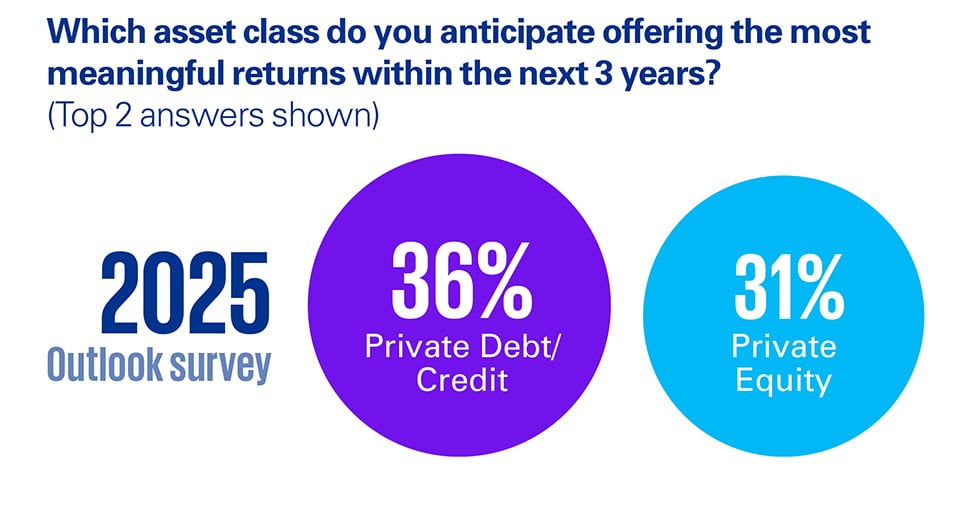
Component Insights
- The software solutions segment in asset management is projected to grow at a CAGR of 13.1% between 2025 and 2029, with its market value expected to reach approximately $16.2 billion by 2029, driven by the rapid adoption of cloud-native platforms and AI-enhanced analytics.
- Portfolio management tools remain the fastest-growing component, contributing 36.7% of software segment growth in 2025, as asset managers increasingly rely on real-time analytics, multi-asset modeling, and automated rebalancing tools to optimize performance.
- Demand for compliance and regulatory software surged by 22.3% in 2025, particularly in Europe and North America, due to evolving regulations such as SFDR, MiFID II, and enhanced AML/KYC mandates.
- Blockchain adoption continues to expand, with 12.4% of global asset management firms now using blockchain for secure transaction processing, fund administration, asset tokenization, and ledger transparency, especially in private markets.
- Artificial Intelligence (AI) is now integrated into 45% of asset management software solutions, helping automate decision-making, risk management, and client reporting processes.
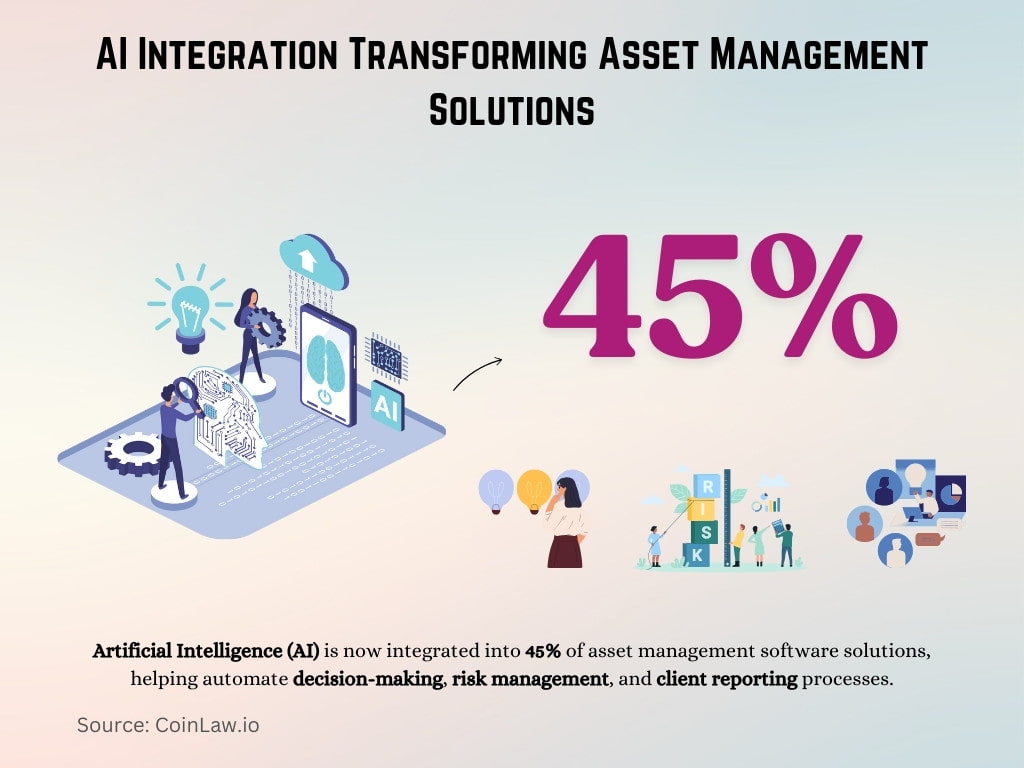
Asset Type Insights
- Equities remain the most dominant asset type, comprising 44.6% of global AUM in 2025, while fixed-income assets continue their upward trend, now representing 31.2% of global portfolios, as investors rebalance toward yield-generating securities amid shifting rate environments.
- Real estate investments increased by 8.9% in 2025, reaching approximately $13.1 trillion in AUM, driven by growing allocations to green buildings, REITs, and sustainable urban infrastructure in both developed and emerging markets.
- Private equity expanded to $8.8 trillion in AUM by the end of 2025, marking a 10.5% year-over-year growth, largely fueled by institutional appetite for higher returns, venture capital, and growth equity strategies.
- Commodities experienced a renewed surge, with a 13.2% increase in AUM in 2025, as investors hedge against inflation and geopolitical risks through allocations to energy, metals, and agricultural derivatives.
- Infrastructure investments are projected to grow at a CAGR of 7.3% from 2025 to 2030, on track to exceed $10.7 trillion, with strong capital flows targeting renewable energy, transportation, and digital infrastructure, particularly through public-private partnerships.
- Hedge funds continued their recovery, growing by 5.8% in 2025 to reach $4.3 trillion in AUM, as investor sentiment shifts toward long/short strategies, macro funds, and AI-assisted arbitrage.
- ESG-aligned assets rose sharply to $44.6 trillion globally in 2025 and are projected to surpass $52 trillion by early 2026, as asset owners and managers prioritize climate-aligned, socially responsible, and governance-compliant portfolios.
Regional Insights
- North America remains the largest asset management market, holding over $63.8 trillion in AUM in 2025, with a projected annual growth rate of 5.1%, fueled by retirement accounts, institutional mandates, and AI-led portfolio services.
- Europe follows with approximately $47.2 trillion in AUM in 2025, with ESG-focused strategies accounting for 27.4% of total assets under management. The EU Green Deal and SFDR compliance continue to drive strong momentum toward sustainable investment vehicles.
- Asia-Pacific is the fastest-growing region, reaching $32.5 trillion in AUM in 2025 and growing at a CAGR of 8.2% through 2028, driven by rising middle-class wealth and fintech-fueled distribution in China, India, Japan, and ASEAN economies.
- China’s asset management market grew by 10.7% in 2025, now holding over $13.3 trillion in AUM, powered by regulatory modernization, digital wealth platforms, and a sharp rise in retail and pension-focused investments.
- Latin America reached $2.7 trillion in AUM in 2025, with Brazil and Mexico continuing to lead regional growth. This was driven by infrastructure-focused funds, pension reforms, and growing interest in ESG and green bonds.
- Middle East and Africa recorded a rise to $2.1 trillion in AUM, led by sovereign wealth funds in GCC nations such as Saudi Arabia, UAE, and Qatar. Capital allocations are focused on infrastructure, energy transition, and diversified equity portfolios.
- Global cross-border asset flows are projected to increase by 13.5% in 2025, with Europe and Asia as key contributors as investors pursue emerging market diversification, climate-aligned strategies, and currency-hedged exposure.

Function Insights
- Risk management functions within asset management have become increasingly automated, with 60% of firms using AI to predict and mitigate potential risks across portfolios.
- The role of asset allocation has been enhanced by advanced analytics tools, enabling 75% of asset managers to adopt a dynamic approach to allocation based on real-time market data.
- Liquidity management has gained prominence, with 20% of institutional investors prioritizing liquidity as a key function, particularly in volatile markets.
- Client reporting and communication functions have evolved, with 85% of asset managers implementing digital tools to provide real-time reporting and enhanced client transparency.
- Risk-adjusted performance measurement, through tools like Sharpe ratios and Sortino ratios, is now used by 90% of asset managers to evaluate portfolio performance more accurately.
- The rise of automated portfolio rebalancing tools has transformed portfolio management, with 40% of portfolios being rebalanced through AI-driven solutions based on pre-set criteria.
- Investment research functions have seen significant automation, with 35% of research now conducted using AI-powered tools that can analyze large datasets to identify potential investment opportunities.
Recent Developments
- BlackRock finalized the acquisition of a $2.4 billion stake in a leading fintech AI firm in 2025, accelerating the integration of machine learning, predictive analytics, and real-time portfolio optimization across its global investment platforms.
- Vanguard expanded its ESG lineup further in 2025, attracting $6.1 billion in new assets year-to-date through its climate-focused, diversity-aligned, and governance-screened ETFs and mutual funds, reflecting surging demand from retail and institutional ESG mandates.
- Goldman Sachs closed fundraising on its new renewable energy private equity fund, securing $3.4 billion in capital commitments in 2025, targeting solar, wind, green hydrogen, and grid modernization projects globally.
- Fidelity Investments’ AI-powered robo-advisor surpassed $53 billion in AUM in 2025, driven by millennial and Gen Z adoption of low-cost, personalized, algorithm-driven investment tools with integrated ESG scoring and goal-based tracking.
- JP Morgan Asset Management expanded its infrastructure fund series, launching a $11.2 billion climate infrastructure fund in 2025, focusing on clean energy, water access, and sustainable transport projects in Southeast Asia, Africa, and Latin America.
- State Street Global Advisors completed the integration of its $1.7 billion acquisition of a top European passive fund manager in early 2025, strengthening its UCITS ETF lineup and regional smart beta offerings.
- Morgan Stanley successfully launched its blockchain-based asset management services in Q1 2025, becoming the first major global asset manager to deploy tokenized funds, smart contract-based rebalancing, and real-time compliance tracking across its institutional client base.
Conclusion
The asset management industry is poised for substantial growth, driven by technological innovation, evolving investor preferences, and the expansion of alternative investments. As AI, blockchain, and ESG investments reshape the landscape, asset managers will need to stay agile and adapt to these emerging trends. The global market is expected to continue expanding, offering both opportunities and challenges. Firms that embrace digital transformation, prioritize sustainability, and offer customized solutions will be best positioned to thrive in the years ahead. Investors, whether institutional or retail, are likely to benefit from a more dynamic and transparent asset management ecosystem.
Hover or focus to see the definition of the term.










